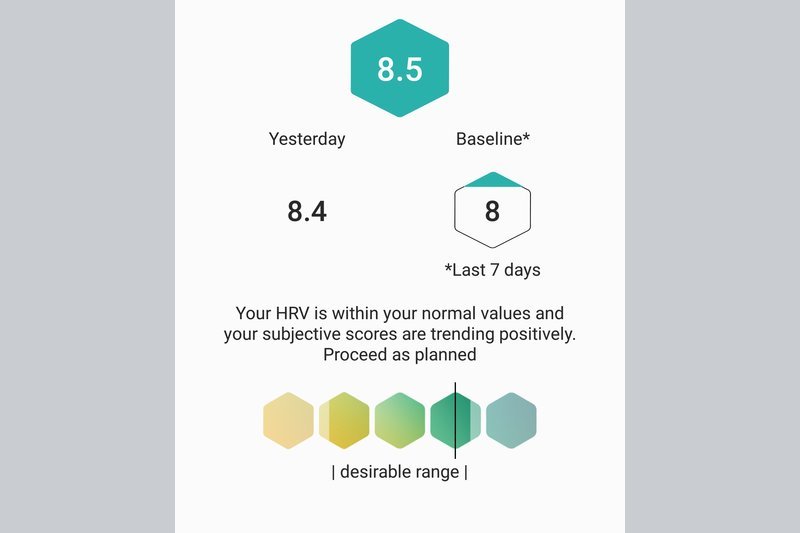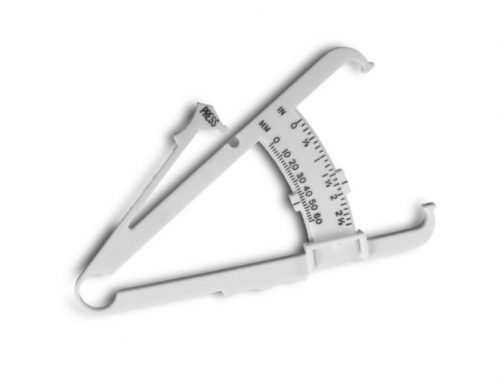Heart Rate Variability (HRV) is a way to measure your stress levels and compare them with your own results over time or with other people with your demographic group.
It has been proven that obesity and lower athletic performance is correlated with low HRV values and we know that accumulated chronic stress not only increases disease risk but also causes weight gain.
HRV is a valuable tool that can help with weight loss and athletic performance by helping you identify lifestyle stressors to avoid. These stressors manifest through emotional, physical, dietary, environmental, and other pathways.
What is HRV?
We are all familiar with the concept of pulse rate which is how many times the heart beats a minute. Heart rate variability measures the consistency (or lack of) in time between heartbeats.
If we measure our pulse, and get a 60 beats per minute reading, it doesn’t mean we have a beat every second. The time differences between beats are slightly different, they can be 0.9 seconds, 1.2 seconds, and so on. When we talk about HRV, we talk about ways to quantify this variation between heart beats.
This variation is controlled by a primitive part of the nervous system, the autonomic nervous system (ANS). The autonomic nervous system is a control system that acts largely unconsciously and regulates, among other things, our heart rate, blood pressure, breathing, and digestion.
The ANS is subdivided into two components, the sympathetic and the parasympathetic nervous system, also known as the fight-or-flight mechanism and the relaxation response.
The sympathetic nervous system controls the fight-or-flight mechanism.
The parasympathetic nervous system controls the relaxation response.
The brain is constantly processing information in a region called the hypothalamus. The hypothalamus, through the ANS, sends signals to the rest of the body either to stimulate or to relax different functions.
If we have persistent negative instigators such as stress, too much alcohol, poor sleep, unhealthy diet, dysfunctional relationships, isolation or solitude, and lack of exercise, the balance may be disrupted, and your fight-or-flight response can increase markedly (Low HRV) which is a bad thing.
Why check heart rate variability?
HRV is an interesting and noninvasive way to identify these ANS imbalances.
Low variation between subsequent heartbeats means your system is in more of a fight-or-flight mode.
High variation between subsequent heartbeats means your system is in more of a relaxed state.
In other words, the higher the ANS the faster you are able to switch gears, showing more resilience and flexibility.
Over the past few decades, research has shown a relationship between low HRV and worsening depression or anxiety. A low HRV is even associated with an increased risk of death and cardiovascular disease.
People who have a high HRV may have greater cardiovascular fitness and be more resilient to stress.
Monitoring your HRV allows you to see how it changes as you incorporate more mindfulness, meditation, sleep, and especially exercise into your life.
How can you check your heart rate variability?
You can check your heart rate variability using an app and either a chest strap heart monitor (EliteHRV and HRV4Training) or just the camera on your phone (HRV4Training).
If you are using a chest strap heart monitor you need to check if it is compatible with your app.
The fingerprint monitor is considered to be less accurate but I get good results with the HRV4training app and it is a lot more convenient. Especially as it is recommended you take your reading at the same time every day when you first get out of bed.
As well as measuring HRV these apps also collect lifestyle data. Once you have taken the test you complete other details such as how you feel, how much alcohol you drank last night, and how hard you trained yesterday (the HRV4Training app can pull this information from the Strava training app which is handy!).
Using this data the app builds your HRV story over time and makes it an even better indicator.
This information can also automatically be feed back to training apps such as Training Peaks. Golden Cheetah can also track HRV but the results need to be manually entered
HRV led sports training - Does HRV effect performance?
As HRV reflects ANS function and thus stress, it is frequently used in sports to identify periods of optimal training, to monitor recovery status and warn of potential overtraining.
An increase in HRV represents a positive adaptation/better recovery status, whilst a reduction in HRV reflects stress and a worse recovery status.
It has been suggested that monitoring HRV can also help identify when an athlete may perform better or worse on a particular day and when an athlete is more susceptible to illness or injury.
The bottom line
Tracking HRV can be a great tool to motivate behavioral change for better outcomes. HRV measurements can help you become aware of how your lifestyle directly affects your nervous system and bodily functions.
While it obviously can’t help you avoid stress, it could help you understand how to respond to stress in a healthier way.






Leave A Comment
You must be logged in to post a comment.